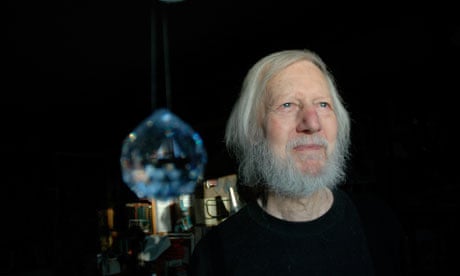The life and career of Hilary Evans, who has died aged 82, were indelibly entwined with those of his wife, Mary. In 1964, they co-founded the Mary Evans Picture Library, a world-famous collection of millions of (primarily) 18th- and 19th-century illustrations. Less well-known, perhaps, was Hilary's career as a writer and researcher into the paranormal. Many groups benefited from his curiosity, intelligence and self-effacing kindness.
Having developed an interest in the paranormal during his student days, he joined the Society for Psychical Research in the late 1960s. He also belonged to the British UFO Research Association and the Folklore Society. In 1981, he co-founded the Association for the Scientific Study of Anomalous Phenomena, a national educational and research charity designed to investigate the common psychological processes behind varying phenomena, studying them together rather than in isolation.
In five decades as a professional writer, besides countless articles Hilary published three novels; 15 books on art, illustration and picture librarianship; seven books on social history, including a history of prostitution (1979); and 16 books on anomalous phenomena.
When I started the Skeptic magazine in 1987, one of the first subscribers to write back was Hilary, offering us the run of the picture library's collection to liven up the pages of what at the time was a very drab, poorly designed newsletter. Being foreign and new to British publishing, I had no idea how lucky we were. For 20 years the look of the magazine has been largely defined by his generosity.
Hilary was born in Shrewsbury, Shropshire, the son of a vicar who moved the family to India to take up a headteacher's job when Hilary was four. At nine, in 1938, he returned to Britain to attend St George's school in Harpenden, Hertfordshire. From then on, he rarely saw his family, spending school holidays with British-based relatives. He served in the military in 1947-48 as a constable with the Palestine police. Discharged with exemplary conduct, he read English at King's College, Cambridge, and completed a master's degree at Birmingham University. After a couple of years tutoring the son of a wealthy Turkish family, he joined an advertising agency as a copywriter in 1953. He stayed there for 12 years, until he and his employer agreed he was not suited to management. Thereafter, he devoted himself full-time to the library and freelance writing.
He met Mary at a party, and they married in 1956. Family legend has it that he realised how perfect a match they were on their honeymoon when, during a meal in a restaurant in Paris, he felt her kicking him under the table. Investigating, he discovered that she was trying to pass him a small mustard pot. Spotted: a fellow collector.
Most people who research paranormal phenomena choose a side in a war of competing beliefs and disputed evidence. Hilary chose instead the side of scholarship, backed up by the massive home library that he donated to the Archives for UFO Research in Sweden – all 5.5 tonnes of it. His measured approach focused on social and cultural context and human psychology, as he believed that understanding extraordinary phenomena required understanding the person who experienced them. That is not to say he never drew conclusions. He was scathing about alien abductions, for example, a belief he (wrongly) predicted in the late 1980s would never take hold in Britain because people there were too sensible.
The range of his scholarship through time and across phenomena meant he was able to see connections no one else could. In books such as Intrusions: Society and the Paranormal (1982), Visions, Apparitions, Alien Visitors (1984) and Gods, Spirits, Cosmic Guardians (1987), he drew a direct line from, for example, folktales of fairies and leprechauns to modern-day accounts of extraterrestrial visitors. His later books included Outbreak! (2009), which examined cases of mass hysteria, and Sliders (2010), which covered street-light interference, the belief by some people that they turn off street lights as they pass by them. Failing eyesight prevented him from writing down his next book, which he had ready in his head.
Mary died last year. Hilary is survived by their daughter, Valentine, three grandchildren, two brothers and a sister.
